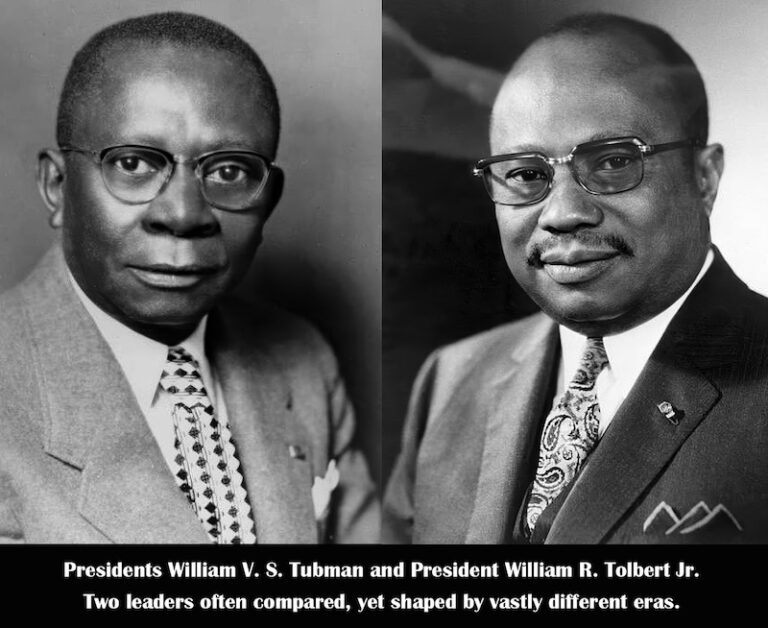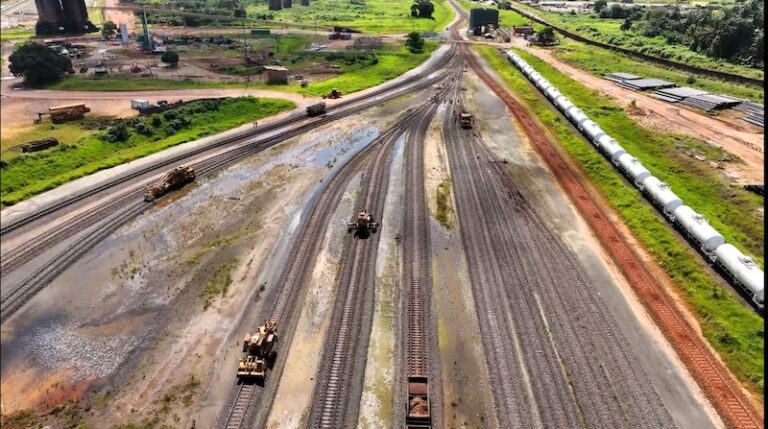
As public debate intensifies over whether Liberia acted properly in allowing Ivanhoe Atlantic to pursue shipment of Guinean ore through the Yekepa–Buchanan railway, many Liberians are only now learning that the two countries have had a formal cross-border transport framework in place for years.
Far from blindsiding the Republic of Guinea, the Ivanhoe Agreement builds upon a long-standing—and jointly negotiated—legal architecture specifically created to enable Guinean mining companies to access Liberian rail and port infrastructure.
A decades-old Guinean “Liberian option”
The movement of Guinean minerals through Liberia did not begin with Ivanhoe. It goes back to the early 1970s, when the two countries signed the 1973 Transit Agreement, followed by the 1983 Application Protocol and then the 2013 Protocol to Facilitate the Transport of Guinean Natural Resources. All three treaties envisioned the export of Guinean products—especially iron ore—through Liberian territory.
But the arrangements were never operationalized. The mineral-rich Nimba region in Guinea sat landlocked for decades, even though the closest deep-water port was Buchanan, and the most economically efficient route was the existing Yekepa–Buchanan railway built during the LAMCO era. Despite repeated attempts over forty years, the protocols lacked the modern regulatory and institutional machinery needed to turn the “Liberian option” into a functioning corridor.
Why the 2019 Implementation Agreement was created
By 2018, both countries recognized that the older agreements were insufficient. They needed a contemporary legal and institutional framework to make cross-border transport workable—not just politically but commercially. That became the 2019 Implementation Agreement (IA), signed in Monrovia and ratified by the Liberian Legislature in 2020–2021.
The IA states bluntly that both countries seek to secure “the evacuation of Guinean Mining Products… via current and future infrastructures and/or transport services located in Liberia” (Article 1.1). It further commits the two states to “promote shared use of transport infrastructure at national, sub-regional and regional levels” (Article 1.2), in accordance with ECOWAS and the African Mining Vision.
But equally important, the IA is explicit about sovereignty. Article 7.3 affirms:
“Liberian regulations shall apply to Transport Infrastructures and Transport Services in Liberia. Guinean regulations shall apply to Mining Projects and Mining Infrastructures in Guinea.”
In other words, the IA coordinates cross-border use, but it does not give either country veto power over the other’s domestic decisions.
How a mining project gets approved under the IA
The IA outlines a two-stage, clearly divided approval process:
Stage 1 — Guinea:
A mining operator must first secure recognition from the Guinean Minister of Mines that the project qualifies as an “Approved Infrastructure Project.” Article 5.1 requires Guinea to confirm that using Liberian infrastructure is essential to the mine’s feasibility.
Stage 2 — Liberia:
Once Guinea has issued that determination, the company submits a Request for Access to Liberia’s Transport Ministry.
Under Article 5.4:
“Liberia undertakes to make a decision on any Request for Access… and shall inform the requesting Mining Operator of the outcome.”
Crucially, there is no requirement for joint approval. The committees established under Article 9—while important—are advisory and coordinative. They “have competency… to make proposals” (Article 9.2.4), but not the authority to override a ministerial act.
Ivanhoe Atlantic’s approvals were already granted by both countries
This two-step process has already been completed for Ivanhoe Atlantic’s Nimba project, whose subsidiaries operate on either side of the border: SMFG in Guinea and Ivanhoe Liberia in Liberia.
Guinea’s Approval — November 2020
Guinea’s Minister of Mines formally authorized Ivanhoe Atlantic’s Nimba project to export ore through Liberia, pursuant to the Nimba Mining Convention and consistent with Article 5.1 of the IA. This recognition confirmed the project as an Approved Infrastructure Project.
Liberia’s Approval — August 19, 2021
In a letter addressed to Ivanhoe Atlantic, Liberia’s then Minister of Transport, Samuel A. Wlue, wrote:
“Pursuant to Article 5.4 of the Implementation Agreement… the Government of Liberia… hereby grants unto [Ivanhoe Atlantic] the Right of Access to Transport Services and/or Transport Infrastructures in Liberia.”
This Right of Access, he added, would be fully completed upon conclusion of a commercial access agreement—precisely the type of agreement now being considered by the Legislature.
Guinea was not sidelined — it was at the table
Official minutes of the Liberia–Guinea Monitoring Committee meeting held in Monrovia on June 9, 2021, show senior Guinean ministers and advisers deeply engaged in discussions on:
-
Ivanhoe Atlantic’s right of access.
-
capacity studies for the Yekepa–Buchanan rail.
-
Buchanan port expansion; and
-
the timetable for commercial negotiations.
The minutes state that Guinea “expressed the wish to see as soon as possible the export of Guinean-based natural resources through railway and port infrastructures located in the Liberian territory.”
That statement alone dispels the misconception that Liberia acted unilaterally.
Where the Ivanhoe CAA fits into the bilateral framework
The Concession and Access Agreement now before the Liberian Legislature is not an improvisation. It is the very instrument the IA foreshadowed.
Article 4.2 of the IA states that the Right of Access “shall be executed via either legal instruments or contracts.”
Article 6.1 instructs Liberia to ensure that these access agreements are completed in timelines compatible with the project implementation calendar.
In short:
-
Guinea has approved Ivanhoe Atlantic’s use of the Liberian corridor.
-
Liberia has approved the project’s right of access.
-
The IA requires the parties to now negotiate the commercial and operational agreement—which is exactly what the Ivanhoe CAA represents.
So did Liberia offend Guinea?
The documentary record—treaties, legislative ratification, ministerial approvals and bilateral committee minutes—points overwhelmingly in one direction:
No. Liberia did not violate Guinea’s sovereignty, sideline Guinea, or act without Guinea’s knowledge.
The Implementation Agreement is a bilateral instrument negotiated jointly. Guinea approved Ivanhoe’s use of Liberia in 2020. Liberia granted access in 2021. The Monitoring Committee, including Guinea’s senior ministers, has repeatedly discussed the project in detail.
Source: Liberian Observer













